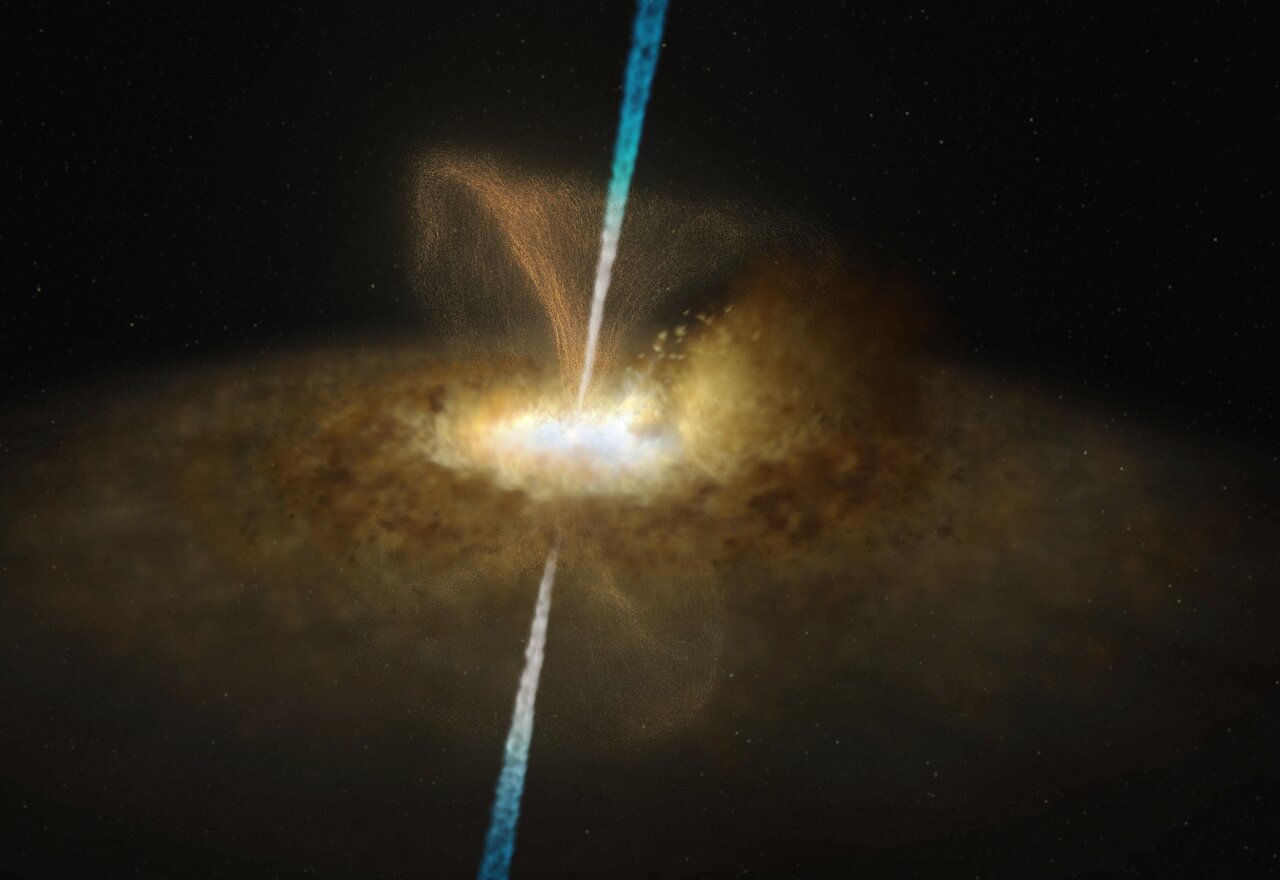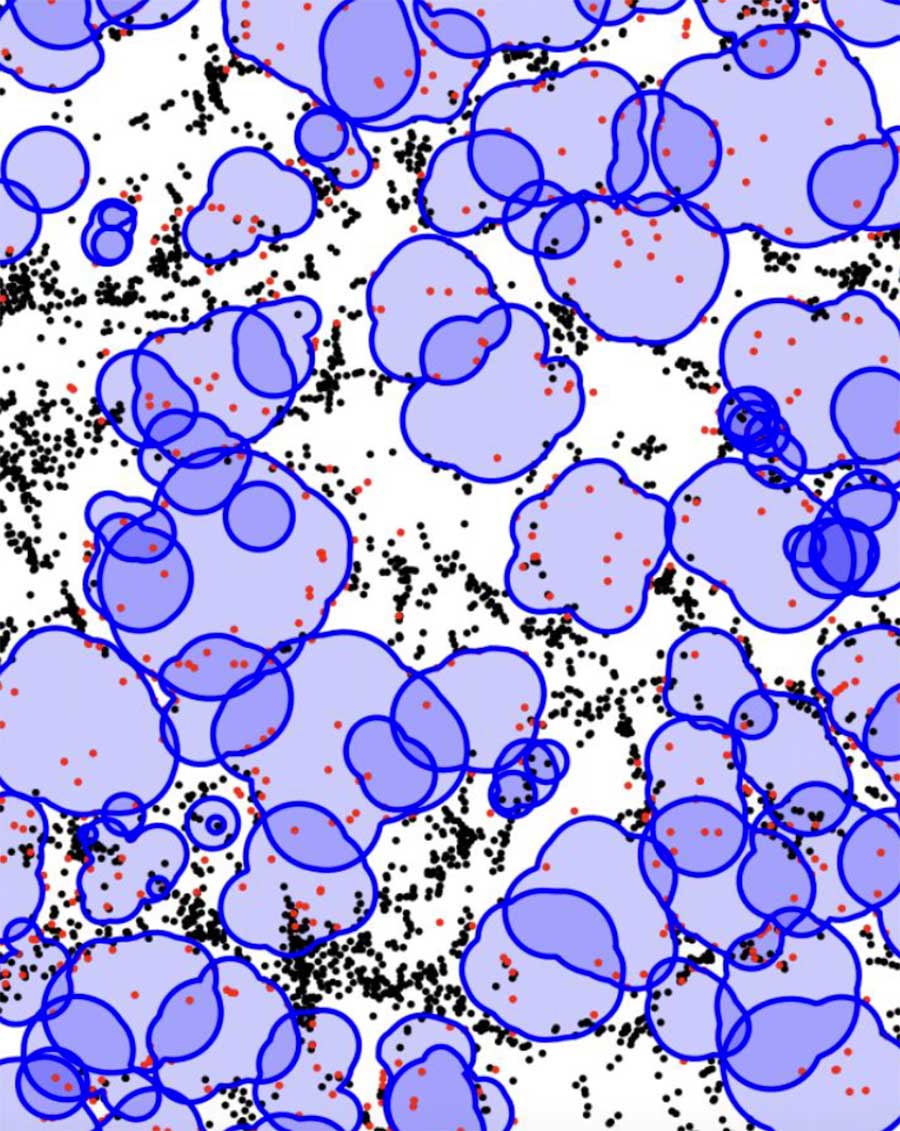Astronomers have found supermassive black holes in smaller galaxies are actually more likely to light up when they’re isolated in vast, cosmic voids.

ESO / M. Kornmesser and L. Calçada
There are immense regions of space that are mostly — but not entirely — empty. Less than a fifth of all galaxies reside within these cosmic voids; most galaxies crowd together along the densely bubble-like walls around them. But it is the isolated galaxies that offer a window on uninterrupted galaxy growth and evolution.
While galaxies along the void walls dance gravitational tangoes with one another, lonely void galaxies evolve without outside interference, as do the supermassive black holes that lurk in their cores. Fewer galactic collisions can mean slower growth, with less fresh gas for fueling star formation — and for feeding the central black holes.
Yet in a new study, Anish Aradhey, who just graduated from Harrisonburg High School, and Anca Constantin, a professor of astrophysics at James Madison University, show that isolation doesn’t mean behemoth black holes of void galaxies go hungry. Instead, the duo found that, at least among the void galaxies smaller than the Milky Way, black holes may have larger meals than they do in galaxies lining void walls.
Aradhey started his search with 290,000 galaxies plucked from the Sloan Digital Sky Survey. He then looked for those galaxies in series of images from the Wide-field Infrared Survey Explorer (WISE), picking out those that were flickering at infrared wavelengths. Aradhey found more than 20,000 flickering galaxies that previous studies had missed.
In a single image, the glow of new stars and the veil of dust they produce can obscure a central, supermassive black hole. But the twinkling in WISE’s image series come not from starlight but from the tempestuous swirls of gas as they flow into the central maw. If a black hole is feeding, WISE is more likely to see it. Astronomers call such feeding black holes active galactic nuclei (AGN).
Aradhey mapped out these galaxies, determining whether or not they lie in a cosmic void. He found, despite the isolation of the voids, that they were actually more likely to host AGN. But that was only true for the smaller galaxies. Milky Way–size galaxies and larger instead tend to be more active if they’re in crowded regions.

Anish Aradhey
In some sense, this is expected. Long ago, the universe was a crowded place, and galaxies merged into bigger ones, sparkling with new stars and active black holes, before star formation ceased and galaxies faded to quiescence. But even as the largest galaxies retired, the midsize galaxies continued to grow, and so on. A similar process could be at work within voids, but with fewer galactic collisions to keep things humming along.
“Our study provides additional evidence for previous findings that the life cycles of active galaxies are delayed/slowed in voids,” Aradhey says.
In another sense, the result contradicts ideas about the role of galaxy mergers in evolution. “This [result] does challenge past findings that galaxy interactions and mergers encourage AGN activity,” Aradhey adds. While galactic mergers and other interactions can encourage gas to flow into a galaxy’s central black hole, they’re apparently not necessary.
Ryan Hickox (Dartmouth College), who studies active galaxies but was not involved in the study, speculates that the lack of competition may even be beneficial. “It may be that low-mass galaxies in voids have had less interaction with other galaxies that would strip or disrupt their gas, and so there is more fuel to power accretion in those systems,” he says.
This work, presented at the 242nd meeting of the American Astronomical Society, isn’t published yet, though a paper is forthcoming. Nevertheless, Aradhey suggests that it could already be tested: “Simulations of dark matter halos and correlations with the properties of their inhabiting galaxies should be able to address these ideas.”
 0
0









Comments
You must be logged in to post a comment.